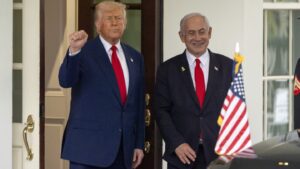
The European Union is setting its sights on Asia with a bold new trade strategy aimed at strengthening ties with the region. This initiative, announced by European Commission President Ursula von der Leyen following an EU summit, signals a significant pivot from the bloc’s previous focus on transatlantic relations. Von der Leyen emphasized the importance of engaging with the Comprehensive and Progressive Agreement for Trans-Pacific Partnership (CPTPP), describing the potential collaboration between the EU and CPTPP as “mighty.”
The announcement comes as the EU seeks to demonstrate that free trade on a rules-based foundation is viable with a large number of countries. The strategy is seen as a way to counterbalance the EU’s trade relations, which have been heavily influenced by its interactions with the United States. The move represents a strategic shift as the EU looks to diversify its economic partnerships and reduce dependency on any single market.
Making the Pledge
But how could forming such a coalition of the willing work? Veteran trade negotiators Tim Groser, Steve Verheul, and John Clarke have proposed a framework for this ambitious plan. In exclusive commentary shared with POLITICO, they suggested an initial step of making an up-front pledge to uphold the established rules of multilateral trade.
Groser, a former New Zealand trade minister; Verheul, previously Canada’s chief trade negotiator; and Clarke, until recently a senior EU trade negotiator, advocate for a “Standstill Agreement.” This would involve the 39 EU and CPTPP countries committing to keeping their markets open to each other. “What it would do is send a massive signal to Washington that a very substantial part of the global economy, including nearly all the traditionally closest partners of the United States, remains committed to the rules-based system,” they explained.
Historical Context and U.S. Relations
The U.S. had the opportunity to join the CPTPP, initially known as the Trans-Pacific Partnership, during the Barack Obama administration. However, in 2017, President Donald Trump withdrew the United States from the pact, marking a significant shift in American trade policy. This withdrawal left a gap that the EU now seems eager to fill, positioning itself as a leader in promoting free trade across the Pacific.
Historically, the EU has maintained strong trade ties with the U.S., but recent years have seen tensions rise over tariffs and trade policies. By engaging more deeply with Asia, the EU aims to mitigate these tensions and establish a more balanced global trade network.
Expert Opinions and Economic Implications
Experts believe that the EU’s strategy could have far-reaching implications for global trade dynamics. According to trade analyst Maria Sanchez, “The EU’s pivot to Asia is not just about economics; it’s a geopolitical move that could reshape alliances and influence power structures globally.”
Moreover, this strategy could provide a boost to the EU’s economy by opening up new markets and opportunities for European businesses. The CPTPP countries, which include Japan, Canada, and Australia, represent a significant portion of the global economy, offering vast potential for trade expansion.
“The CPTPP countries account for 13.4% of the global economy, making this partnership a lucrative opportunity for the EU,” noted Sanchez.
Looking Ahead
The EU’s new trade strategy with Asia is still in its early stages, and much will depend on the willingness of CPTPP countries to engage with the EU. The success of this initiative will also hinge on the EU’s ability to navigate complex trade negotiations and secure favorable terms for its member states.
As the EU moves forward with its plans, it will be crucial to monitor how the United States responds to this shift in global trade dynamics. The EU’s strategy could potentially influence U.S. trade policies and encourage a reevaluation of its stance towards multilateral trade agreements.
Ultimately, the EU’s pivot to Asia represents a bold step towards diversifying its trade relationships and asserting its role as a global economic leader. Whether this strategy will yield the desired results remains to be seen, but it undoubtedly marks a significant moment in the evolution of international trade.






